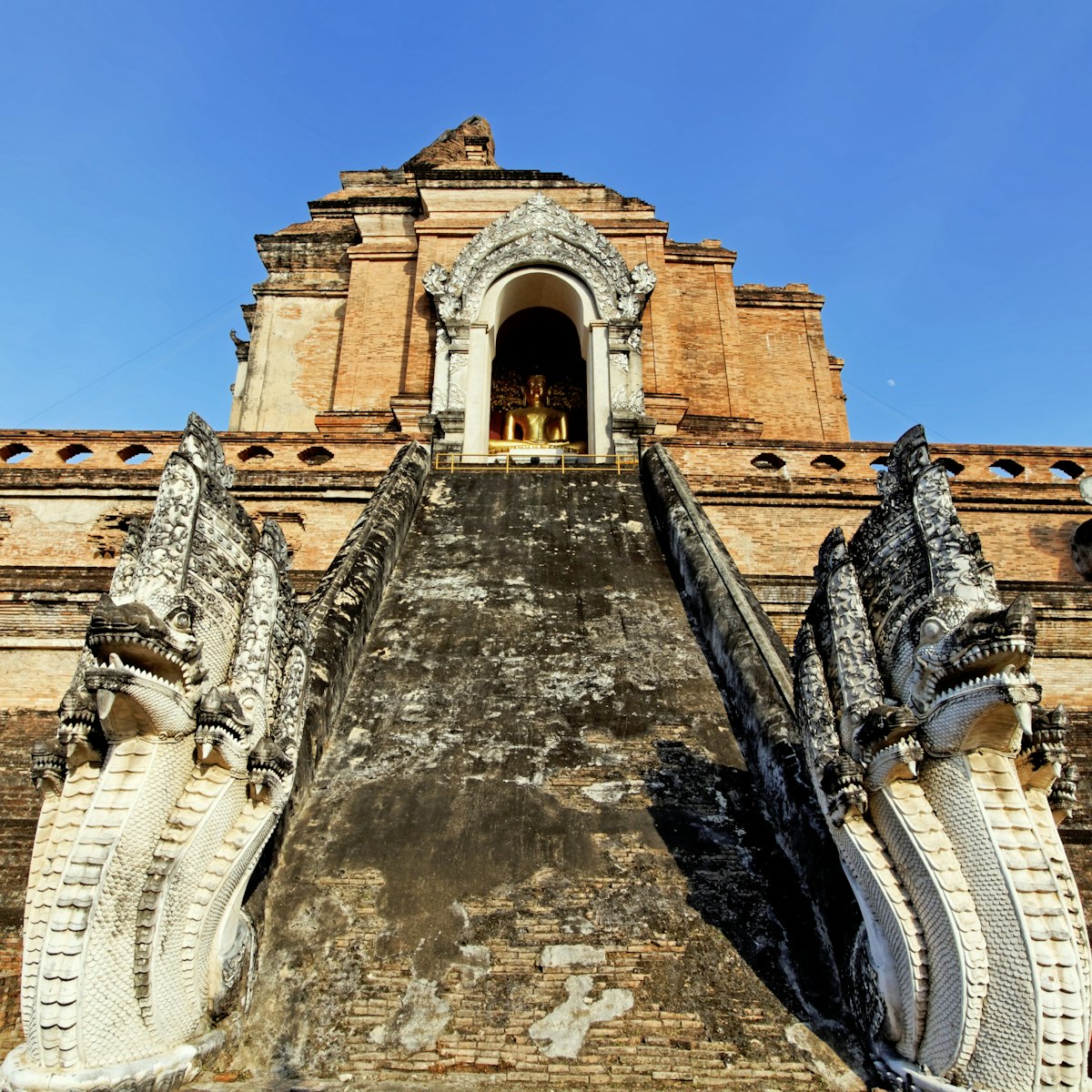The first attempt at founding a city on the banks of Mae Ping, Wiang Kum Kam served as the Lanna capital for 10 years from 1286, but the city was abandoned in the 16th century due to flooding. Today, the excavated ruins are scattered around the winding lanes of a sleepy village 5km south of Chiang Mai.
The centuries haven't been kind to Wiang Kum Kam, but the brick plinths and ruined chedi give a powerful impression of its former magnificence.
The landmark monument of the ruins is Wat Chedi Liam, with a soaring stucco chedi divided into dozens of niches for Buddha statues, an architectural nod to India's famous Mahabodhi Temple. In fact, this spire was created as part of a rather fanciful restoration by a Burmese trader in 1908. Over 1300 inscribed stone slabs, bricks, bells and chedi have been excavated at the site and some pieces are displayed at the visitors centre. The most important archaeological discovery was a four-piece stone slab, now housed at the Chiang Mai National Museum, inscribed with one of the earliest known examples of Thai script.
Most people explore the ruins by horse cart or tram, starting from the visitors centre on Rte 3029; if you come with your own transport via Th Chiang Mai–Lamphun (Rte 106), follow the signed road past a small roundabout with a fountain and turn left at the T-junction to reach Wat Chedi Liam.







